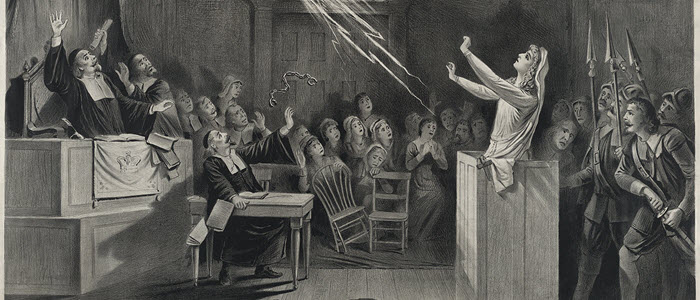The Black Man in H P Lovecraft’s The Dreams in the Witch House was grounded in the folklore of the Salem Witchcraft trials and earlier.
The witch Keziah Mason informs us that Walter Gilman must meet the sinister character The Black Man:
“He must meet the Black Man, and go with them all to the throne of Azathoth at the centre of ultimate Chaos. That was what she said. He must sign in his own blood the book of Azathoth and take a new secret name now that his independent delvings had gone so far.” – The Dreams in the Witch House
The Black Man was already firmly entrenched in Early American folklore as a being synonymous with Satan. Lovecraft was well read on this topic and was much enthused by Margaret Murray’s The Witch Cult in Western Europe (1921).
But Margaret Murray herself drew from original sources such as Cotton Mather’s The Wonders of the Invisible World (1693), a text which described the statements of accused witches as to either the servant of, or actual being of Satan. Various differences appear in the description, but the defining characteristic is his black skin and non-African appearance. The Black Man carries a large book in which a new adherent signs away their soul and get a new, secret witch name.
So begins Cotton Mather:
In the spring of 1692 an alarm of witchcraft was raised in the family of the minister of Salem, and some black servants were charged with the supposed crime. Once started, the alarm spread rapidly, and in a very short time a great number of people fell under suspicion, and many were thrown into prison on very frivolous grounds, supported, as such charges usually were, by very unworthy witnesses. The new governor of the colony, Sir William Phipps, arrived from England in the middle of May, and he seems to have been carried away by the excitement, and authorized judicial prosecutions….
Lovecraft was also entranced by the works of American writer Nathaniel Hawthorne. The Black Man is referenced in the novel The Scarlet Letter (1850) and in short in “Feathertop: A Moralized Legend” (1852). Of interest also is that one of Hawthorne’s own ancestors was a judge at the Salem Witch Trials.
Lovecraft was also enamored of the works of Welsh author Arthur Machen and the Black Man also makes an appearance in Machen’s short story The White People (1899).
The question we are left with is if there is any connection at all between The Black Man of folklore and Nyarthathotep – and that appears entirely intentional on Lovecraft’s part.

One thought on “Some Background on the Black Man in The Dreams in the Witch House”